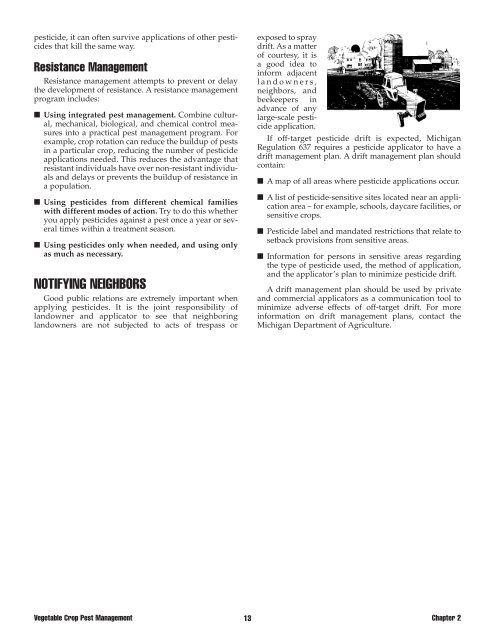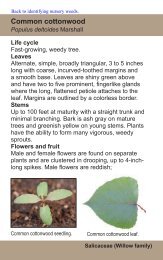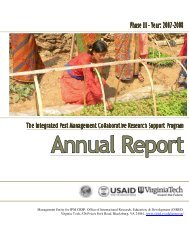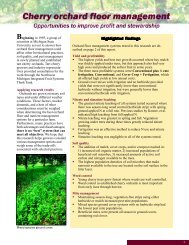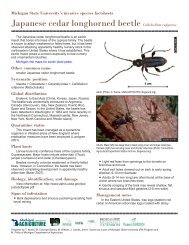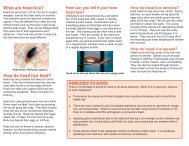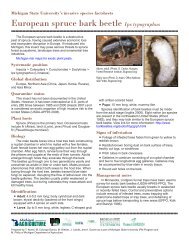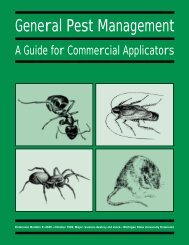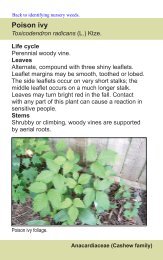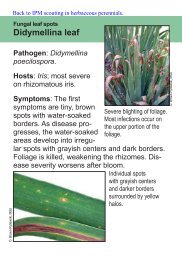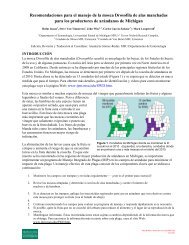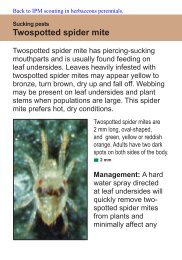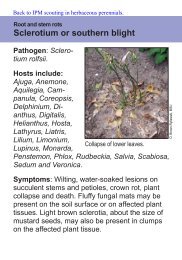Whole Manual - Michigan State University: Integrated Pest ...
Whole Manual - Michigan State University: Integrated Pest ...
Whole Manual - Michigan State University: Integrated Pest ...
You also want an ePaper? Increase the reach of your titles
YUMPU automatically turns print PDFs into web optimized ePapers that Google loves.
pesticide, it can often survive applications of other pesticides<br />
that kill the same way.<br />
Resistance Management<br />
Resistance management attempts to prevent or delay<br />
the development of resistance. A resistance management<br />
program includes:<br />
■ Using integrated pest management. Combine cultural,<br />
mechanical, biological, and chemical control measures<br />
into a practical pest management program. For<br />
example, crop rotation can reduce the buildup of pests<br />
in a particular crop, reducing the number of pesticide<br />
applications needed. This reduces the advantage that<br />
resistant individuals have over non-resistant individuals<br />
and delays or prevents the buildup of resistance in<br />
a population.<br />
■ Using pesticides from different chemical families<br />
with different modes of action. Try to do this whether<br />
you apply pesticides against a pest once a year or several<br />
times within a treatment season.<br />
■ Using pesticides only when needed, and using only<br />
as much as necessary.<br />
NOTIFYING NEIGHBORS<br />
Good public relations are extremely important when<br />
applying pesticides. It is the joint responsibility of<br />
landowner and applicator to see that neighboring<br />
landowners are not subjected to acts of trespass or<br />
exposed to spray<br />
drift. As a matter<br />
of courtesy, it is<br />
a good idea to<br />
inform adjacent<br />
landowners,<br />
neighbors, and<br />
beekeepers in<br />
advance of any<br />
large-scale pesticide<br />
application.<br />
If off-target pesticide drift is expected, <strong>Michigan</strong><br />
Regulation 637 requires a pesticide applicator to have a<br />
drift management plan. A drift management plan should<br />
contain:<br />
■ A map of all areas where pesticide applications occur.<br />
■ A list of pesticide-sensitive sites located near an application<br />
area – for example, schools, daycare facilities, or<br />
sensitive crops.<br />
■ <strong>Pest</strong>icide label and mandated restrictions that relate to<br />
setback provisions from sensitive areas.<br />
■ Information for persons in sensitive areas regarding<br />
the type of pesticide used, the method of application,<br />
and the applicator’s plan to minimize pesticide drift.<br />
A drift management plan should be used by private<br />
and commercial applicators as a communication tool to<br />
minimize adverse effects of off-target drift. For more<br />
information on drift management plans, contact the<br />
<strong>Michigan</strong> Department of Agriculture.<br />
Vegetable Crop <strong>Pest</strong> Management 13<br />
Chapter 2


